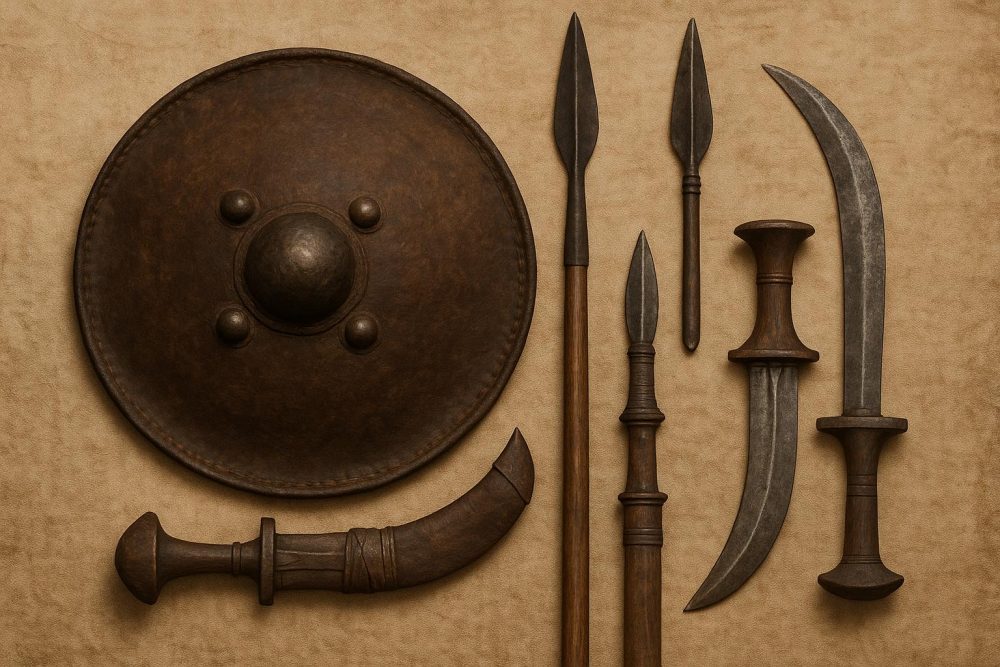
Traditional Weaponry in Somaliland History
The history of Somaliland is rich with cultural heritage and historical events that have significantly shaped the region. Among the important aspects of its history is the traditional weaponry utilized by its inhabitants over the centuries. These weapons were not only tools of war but also integral elements of the society’s cultural identity.
The Spear
The spear is one of the most fundamental weapons in Somaliland’s history. Used extensively in both hunting and warfare, it was a versatile tool that played a pivotal role in daily life. Crafted primarily from local hardwood trees, spears were typically long, allowing for effective use in combat scenarios. The spearheads were often fashioned from iron or other metals, a testament to the community’s metalworking proficiency. This combination of materials made the spear a formidable weapon, sharpened and balanced to perfection.
The Role of Spears in Society
Spears were not just instruments of war but also symbols of status and prowess within the community. A well-crafted spear could signify the owner’s skills and standing among peers. Additionally, these weapons found their place in traditional dances and ceremonies, representing courage and valor. The ceremonial use of spears often entailed intricate movements passed down through generations, emphasizing the weapon’s dual role in both combat and cultural expression.
The Shield
Another notable component of traditional weaponry was the shield, serving as an essential defensive tool in battles. Made from animal hides, such as those of the buffalo or giraffe, the shields were both durable and lightweight. The leather was often treated with natural substances to enhance its strength and resilience, giving warriors an advantageous combination of protection and mobility.
The Craftsmanship of Shields
Each shield was meticulously crafted to suit the specific needs of the warrior employing it. Often these designs included intricate patterns, serving not only as decoration but also as identification and personal expression. In the heat of battle, shields were used strategically to protect the bearer while facilitating movement, allowing Somali warriors to adapt quickly to changing situations and maintain their agility and effectiveness.
The Sword
Swords, locally referred to as “seef” or “bill,” formed a prominent part of Somaliland’s traditional arsenal. These weapons were characteristically short with a curved blade, allowing for swift, agile movements in close combat. The hilts were frequently adorned with ornate designs, reflecting the owner’s taste and social status. The sword’s design was not merely functional but a symbol of one’s personal expression and identity within the community.
Swordsmanship
Swordsmanship was a revered skill among the inhabitants. Young warriors were trained from an early age in its use, absorbing techniques passed down through generations. This training was not only about mastering combat skills but also emphasized discipline, strategy, and a profound respect for weaponry. Such training ensured that swordsmen could perform with precision and honor, embodying the warrior ethos of the time.
Archery
While less common compared to spears and swords, archery played a role in hunting and occasional skirmishes. Bows were finely crafted from local materials, and arrows were often tipped with sharpened stones or metal. Practicing archery required precision and patience, traits highly valued in traditional Somaliland society. This discipline highlighted the connection between individuals and their environment, showcasing an intrinsic understanding of nature and strategic implementation.
The Significance of Accuracy
The ability to hit a target accurately was celebrated as an indication of skill and maturity. Accuracy was not only crucial for survival in hunting but also considered an art form, demonstrating the archer’s profound connection with nature and the environment. Accurate archery work also required a deep understanding of atmospheric conditions and target behavior, skills that were revered and indicative of a seasoned warrior.
The Cultural Significance of Weaponry
The traditional weaponry of Somaliland transcends mere practicality and is deeply woven into the societal fabric, representing the ingenuity and cultural values of its people. Beyond their immediate function, these weapons symbolized strength, skill, and artistic expression. This multifaceted role of weaponry highlights the rich tapestry of Somali heritage, whereby warfare, survival, and culture blend seamlessly.
Conclusion
Traditional weaponry in Somaliland history stands as a testament to the ingenuity and resourcefulness of its people. These tools and weapons were more than mere instruments of war; they were inseparably intertwined with the cultural values and social structures of the time. Understanding this aspect of Somaliland’s history provides a broader perspective on the region’s rich and diverse heritage. The significance of these weapons extends beyond their physical form to embody the spirit and identity of the Somali people, preserving their stories and traditions through successive generations.